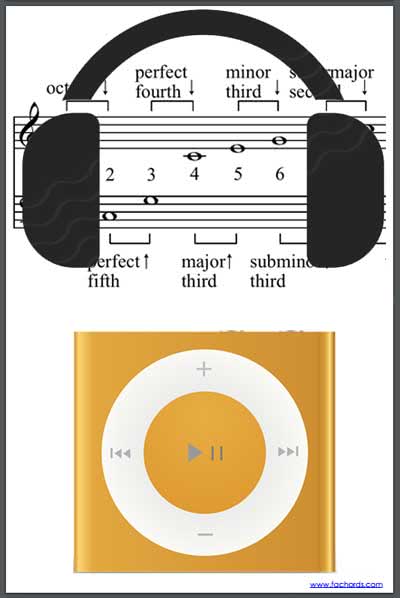

These practice methods will help you to improve your ear to hear notes on your guitar.
#8notes interval ear trainer how to#
Get them to play one note that you know, and then another one that you don’t, and try to call it out! It‘s tough at first! But with enough interval training and active listening, there is no doubt that you will get it eventually! Audio engineering requires an excellent ear, and the ability to do this not only with notes but with frequencies.Īt MI College of Contemporary Music, our audio engineering program will train you how to recognize frequencies, tune rooms, and improve mix and masters and design sound.In this lesson, we are going to learn ear training practice for guitar players. One of the best ways is to get a friend to play notes on the piano and try to call them out. Test Your Ears – Do you feel like you’re starting to get a handle on the pitch? There’s only one way to find out! Put your ears to the test. With enough practice, you will develop relative pitch – the ability to call out notes, based on a reference. You can do this for every single interval and is an immensely useful tool as a musician. An octave interval or 12 steps (8 notes) sounds like the opening guitar riff to Purple Haze by Jimi Hendrix. This should sound exactly like the opening notes to “My Bonnie Lies Over the Ocean”. Here’s an example: a 1 – 6th interval means that the note has gone from a root to 6 steps up. There are only 12 pitches in an octave, so understanding how they sound with each other is important, and there are some pretty easy ways to remember this if we can summon audition skills for certain songs. Interval training – This is the beginning of finding relative pitch. This is a great exercise with many benefits.

Listen for sounds a little further away and repeat the process. What is it – is it fast or slow? Loud or quiet? Focus on the sound and just hear it and feel it. Try focusing on sounds starting with what is closest to you. To advance on this, try picking out the tune on your instrument of choice unless of course, you’re a singer and have already been using it.Īctive Listening – This is another exercise that also crosses over into mindfulness territory, making it useful for both ear training, and clearing your mind. This forms the basis of your training but you can take it further. Paying close, mindful attention to this will allow you to feel where different frequencies reside in your body: your throat and nose, your head, etc. You will notice that the sound is not only heard when you try to replicate it internally but it is felt. The idea is to replicate a piece of music or a sound in tune when it is not there. It’s one of the first steps to pitch and rhythm training.

Listen to some music, turn it off and try to hum the tune. Just because you have a natural perfect pitch, doesn’t mean you can hold a beat! It’s always good to start at the beginning:Īudiation – This is very simple. Even advanced musicians can benefit from some of these. It may still be worth it for experienced musicians to have a scan through the basics. We will start with some beginner-level exercises and then advance. In this article, we’re going to talk about a few methods that will help you train your ear so that you can always be on top of what is going on when it comes to pitch, timbre, rhythm, and more. That being said, it comes easier to some than to others. Most people will not wind up achieving perfect pitch, but relative pitch – the ability to call out notes based on their relationship to other notes, is essentially universally attainable if your ears are working. Some people are, as with most things, born with more ability than others. Perfect pitch is not necessarily a gift, it can be learned. Perfect pitch – or the ability to call out notes as they are played with no reference -was regarded as a gift for a long time. Have you ever sat and wondered how somebody could play such an incredibly out-of-tune guitar or piano without having the hairs stand up on the back of your neck? Alternatively, have you ever stood in amazement at how entire orchestras can hit the right notes either slow or incredibly fast, with pinpoint accuracy?


 0 kommentar(er)
0 kommentar(er)
